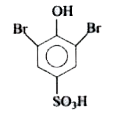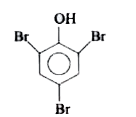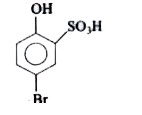Alkyl halide undergoes sequence of reaction to form primary amine. Identify X and Y in the following sequence
C2H5BrX−−→Product Y−−→C3H7NH2
X=KCN,Y=H3O+
X=KCN,Y=LiAlH4
X=CH3Cl,Y=AlCl3/HCl
X=CH3NH2,Y=HNO2
The correct Answer is:B
To solve the problem, we need to identify the reagents X and Y in the sequence of reactions that convert an alkyl halide (C2H5Br) into a primary amine (C3H7NH2).
1. Identify the starting material:
The starting material is C2H5Br (bromoethane).
2. Determine the first reaction (X):
The first reaction involves C2H5Br undergoing a reaction that leads to the formation of a primary amine. The reagents provided in the video transcript indicate that the reaction involves bromine (Br2), sodium hydroxide (NaOH), and sodium carbonate (Na2CO3). This suggests a reaction pathway that resembles the Hofmann bromamide degradation reaction.
In this reaction, C2H5Br reacts with NaOH to form an intermediate, which can be converted to a primary amine. Thus, X is NaOH.
3. Identify the product after the first reaction:
After the reaction with NaOH, the product formed is an intermediate that can be represented as RNH2 (where R is the ethyl group, C2H5). This intermediate is a primary amine, specifically C2H5NH2.
4. Determine the second reaction (Y):
The second part of the reaction involves the primary amine (C2H5NH2) reacting with CHCl3 and KOH. This reaction is known as the formation of an isocyanate, which can further react to yield a primary amine.
Therefore, Y is CHCl3 and KOH.
5. Final product:
The final product after the second reaction is C3H7NH2, which is a primary amine (specifically propylamine).
Summary:
- X = NaOH (sodium hydroxide)
- Y = CHCl3 and KOH (chloroform and potassium hydroxide)
Final Answer:
- X is NaOH
- Y is CHCl3 and KOH
The starting material is C2H5Br (bromoethane).
The first reaction involves C2H5Br undergoing a reaction that leads to the formation of a primary amine. The reagents provided in the video transcript indicate that the reaction involves bromine (Br2), sodium hydroxide (NaOH), and sodium carbonate (Na2CO3). This suggests a reaction pathway that resembles the Hofmann bromamide degradation reaction.
After the reaction with NaOH, the product formed is an intermediate that can be represented as RNH2 (where R is the ethyl group, C2H5). This intermediate is a primary amine, specifically C2H5NH2.
The second part of the reaction involves the primary amine (C2H5NH2) reacting with CHCl3 and KOH. This reaction is known as the formation of an isocyanate, which can further react to yield a primary amine.
The final product after the second reaction is C3H7NH2, which is a primary amine (specifically propylamine).
- X = NaOH (sodium hydroxide)
- Y = CHCl3 and KOH (chloroform and potassium hydroxide)
- X is NaOH
- Y is CHCl3 and KOH
Similar Questions
Knowledge Check
Identify the end product (Y) of the following sequence of reaction :
 A
A B
B C
C D
D
Identify X and Y in the following reaction BCl3+NH4Cl140∘C/C6H5Cl−−−−−−−−−→XNaBH4−−−−→Y
View SolutionC2H4Br2−−→XKCN−−→Y,Y is
View SolutionIdentify the final product (Z) in the following sequence of reactions :
Me2C=O+HCN→(X)H3O+−−−→(Y)H2SO4−−−→
View SolutionThe end product (B) in the following sequence of reactions is CH3ClKCN−−→AH2O/H+−−−−−→B
View SolutionCompound "X" undergoes the following sequences of reactions to form "Y"
 compound "Y"is -
compound "Y"is -
View SolutionThe final product (Y) of the following reaction is:
C2H4Br2−−→ X Ph3SnH−−−−→ Y
View SolutionIdentify X and Y in the given reaction:
P4+HNO3→X+Y+H2O
View Solution
